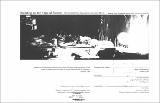| dc.contributor.advisor | Fernando Domeyko. | en_US |
| dc.contributor.author | Weingarten, Lauren Ariel | en_US |
| dc.contributor.other | Massachusetts Institute of Technology. Department of Architecture. | en_US |
| dc.date.accessioned | 2013-05-29T19:47:48Z | |
| dc.date.available | 2013-05-29T19:47:48Z | |
| dc.date.copyright | 1989 | en_US |
| dc.date.issued | 1989 | en_US |
| dc.identifier.uri | http://hdl.handle.net/1721.1/79003 | |
| dc.description | Thesis (M. Arch.)--Massachusetts Institute of Technology, Dept. of Architecture, 1989. | en_US |
| dc.description.abstract | This thesis sprang from a fascination with and respect for speculative thought in science. One need walk no further than down the "infinite corridor" to feel the pulse of experimentation that has earned M.I.T. the reputation of being one of the principal research institutes of the world. But, even with the commitment to research found at M.I.T. market demands point toward specialization. This creates an environment where speculative science in its classic sense cannot occur. It is the aim of this project to reconnect contemporary higher science with ancient ideas of a unified world view. To do this, the scientists at M.I.T. will be provided with a physically different environment from the everyday scientific workplace, with its gadgetry and budgetary constraints, if even for a short time. The site I propose to locate the Institute for Speculative Science is removed from Boston but is close enough to remain in the scientists' frame of reference. Located between Quincy and Thompson Island in the Boston Harbor, the institute for Speculative Science builds on the tension between built and natural states: urban to exurban; mainland to island; rock to water. This project will occupy the space between the mainland (Quincy) and surrounding islands, currently treated as an orphan of the big city. From the vantage point of the Institute for Speculative Science, you can see the Boston skyline but Boston cannot see you. You walk on a natural and wild beach, but this beach is littered with debris, relics of Boston's industrial recent past. The models and drawings in this book are scaled representations of the proposed project, they are how ever drawn and made as worlds in their own right which the participant in this book can experience. To communicate the idea of a building on the edge of reason, I've looked to bring to light a project that you feel before you understand. | en_US |
| dc.description.statementofresponsibility | by Lauren Ariel Weingarten. | en_US |
| dc.format.extent | 95 p. | en_US |
| dc.language.iso | eng | en_US |
| dc.publisher | Massachusetts Institute of Technology | en_US |
| dc.rights | M.I.T. theses are protected by
copyright. They may be viewed from this source for any purpose, but
reproduction or distribution in any format is prohibited without written
permission. See provided URL for inquiries about permission. | en_US |
| dc.rights.uri | http://dspace.mit.edu/handle/1721.1/7582 | en_US |
| dc.subject | Architecture. | en_US |
| dc.title | Building on the edge of reason : the Institute for Speculative Science, M.I.T. | en_US |
| dc.type | Thesis | en_US |
| dc.description.degree | M.Arch. | en_US |
| dc.contributor.department | Massachusetts Institute of Technology. Department of Architecture | |
| dc.identifier.oclc | 20449073 | en_US |
